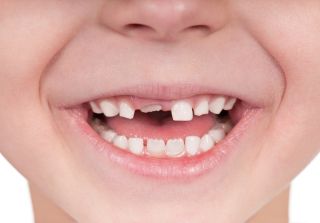We all have that parenting moment when we encounter a tooth that is about to fall off our kid’s mouth. We often wonder what to do next. Do we pull it out or just let it fall off eventually? It’s normal for kids to lose their loose baby teeth on their own, but some parents may want to help the process along.
You should read this article before you tie a string around their teeth and pull it through a door. This article will discuss what you should do if your child has a loose hanging tooth. We will also answer whether it is safe to pull it or not. Read more to find out!
What should you do when your child has a loose tooth?
First of all, it’s okay to feel both excited and scared. When your child starts to have their permanent teeth, parents may feel a bit scared of the idea and panic because they don’t know what to do. Of course, the best way is to consult your child’s pediatric dentist, but what if it’s not one of your available options? Here are some ways you can do to help your child if they are having a loose tooth.
Visit a pediatric dentist
Of course, you can’t just pull their tooth without doing any aftercare. We suggest that you take your child to a pediatric dentist They can check if there are any side effects or damage that happens after pulling a tooth. Remember, the methods mentioned above can affect your child’s permanent teeth, so it’s better to have them checked by an expert.
If you are looking for a pediatric dentist in Burke, VA, look no further than Junior Smiles of Stafford. Their pediatric dentist can provide the best dental care to ensure your child’s teeth will still develop according to plan.
Wiggle method
Urge your child to complete the assignment before you begin your own work. If your child requires assistance to remove a loose tooth, you can grasp it with clean gauze or tissue and give it a quick twist to remove it from the socket. Extraction of a tooth at home should be performed with caution and attention, and a tooth can be extracted with minimal force when it has become sufficiently dislodged. Teach your child how to gently wiggle their teeth with their tongue or a clean finger, so they can do it on their own if they choose to. Instruct youngsters to handle their teeth carefully and never use force under any circumstances.
“String and Door” method
This is one of the most common methods of pulling off a tooth. You can attempt this strategy to amuse your child if one of their teeth is on the edge of falling out; however, you won’t need to use force if the tooth is genuinely ready to fall out. Dentists do not recommend yanking a tooth out of a child’s mouth since doing so can damage the surrounding tissue if you are a child with a loose tooth, and it is relatively painless. Nevertheless, if you are an adult with a tooth that is already damaged, this method may cause more harm to the tooth’s root or the bone that lies behind the gums.
Make a twisting motion while pulling
If the tooth that your child is struggling to keep in place is ready to be pulled, you should grab it firmly while maintaining the gauze or cloth wrapped over it. The teeth should be extracted with as much force as possible while rotating the wrist. Your child’s tooth should be extracted quickly but with some blood, and keep the pressure on using a cloth to avoid excessive bleeding.
Conclusion
Overall, it is relatively safe to pull out your child’s loose teeth. However, you still need to see some precautions and risks. If your child is dealing with any kind of pain, stop the process immediately and go to the nearest pediatric dentist. You risk damaging their permanent teeth if you force them to pull it. It’s always best to discuss your alternatives with a pediatric dentist if you want their tooth loss experience to be positive rather than traumatic!













